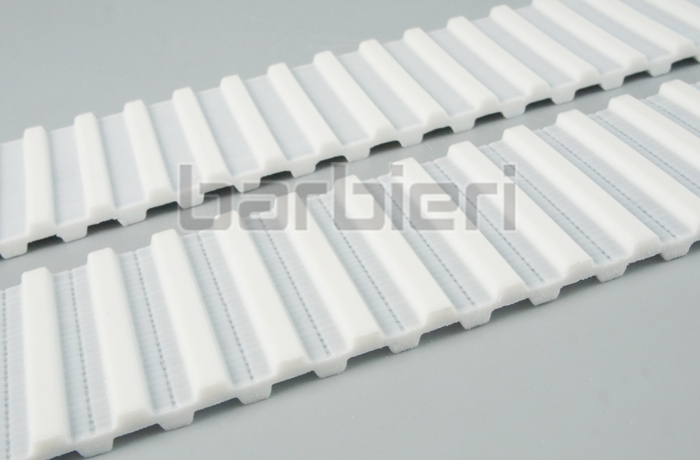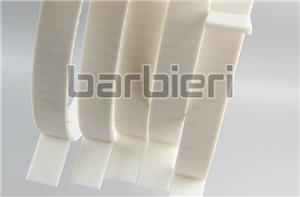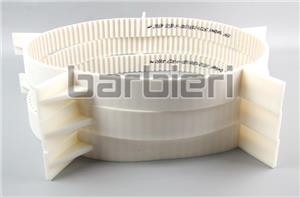Double sided timing belt
The difference between double-sided staggered teeth and double-sided toothed timing belts
Double-sided timing belts can be divided into two types according to the arrangement of the teeth:
One is the DB type double-sided tooth timing belt. The tooth arrangement on both sides of the transmission belt is: double-sided staggered teeth, called double-sided staggered tooth timing belt; the other is DA type double-sided tooth timing belt. The tooth arrangement on both sides of this drive belt is: double-sided symmetrical teeth, called double-sided toothed timing belt.
1. Double-sided staggered tooth timing belt(DB)
The tooth shape and pitch of the double-sided staggered tooth timing belt are equal to the tooth shape and pitch of the single-sided tooth timing belt.

2. Double facing timing belt(DA)
The tooth shape and pitch of double-sided toothed timing belt are equal to the toothed shape and pitch of single-sided toothed timing belt.

Double-sided staggered teeth and double-sided toothed timing belts are two different transmission belts, and their differences in use are as follows:
1. Structural features:
Double-sided staggered-tooth timing belt: Both sides of the double-sided staggered-tooth timing belt have a staggered tooth structure, which enables the transmission belt to maintain stable transmission performance during forward and reverse transmission.
Double-face toothed timing belt: Both sides of the double-faced toothed timing belt have a symmetrical tooth structure, which enables the transmission belt to maintain low noise and vibration during forward and reverse transmission.
2. Scope of use:
Double-sided staggered tooth timing belt: suitable for occasions that require high precision and stable performance in both forward and reverse transmission, such as machine tools, packaging equipment, construction machinery, etc.
Double-face toothed timing belt: suitable for occasions that require low noise and vibration during forward and reverse transmission, such as automotive engine parts, medical equipment, household appliances, etc.
3. Installation requirements:
Double-sided staggered-tooth timing belt: Since both sides of the double-sided staggered-tooth timing belt have misaligned tooth structures, it is necessary to ensure that the tooth shapes on both sides are symmetrical and correct during installation to ensure the transmission stroke and transmission accuracy.
Double-face toothed timing belt: The two sides of the double-faced toothed timing belt have a symmetrical tooth structure, and there are no special requirements for installation, just follow the installation method of the transmission belt.
Ingeneral, the double-sided staggered tooth timing belt is suitable for transmission occasions that require high precision and stable performance, while the double-face tooth timing belt is suitable for transmission occasions that require high noise and vibration. According to the specific use requirements and transmission conditions, choosing a suitable transmission belt can improve the transmission effect and long-lasting performance.
- Polyurethane Timing Belt
- Annular Timing Belt
- Open-end Timing Belts
- AT-series Timing Belts
- T-series Timing Belts
- STD-series Timing Belts
- HTD-series Timing Belts
- RPP-series Timing Belts
- TT5-series Timing Belts
- Imperial Series Timing Belt
- Supported Polyurethane Flat Belt Series
- Double Sided Timing Belt
- ATN-series Timing Belts
- Timing Belt With Backing
- Timing Belt With Fabric
- Timing Belt Punching
- Polyurethane Self-tracking Timing Belt
- Polyurethane Belt With Profile
- Special Processing Timing Belt




